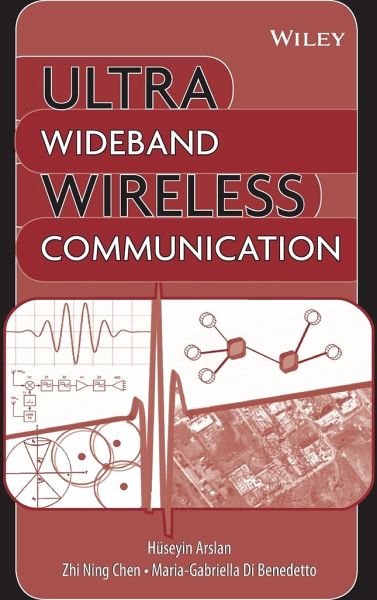
Ultra Wideband Wireless Communication

PAYBACK Punkte
76 °P sammeln!
Focusing on ultra wideband (UWB) communication technology for applications including WPAN, sensor and ad-hoc networks, as well as wireless telemetry and telemedicine, Ultra Wideband Wireless Communication covers both theory and practical issues, including RF, hardware and circuit issues and digital signal processing aspects. Practical "real-world" case study chapters include network and transceiver practical design, and discussions and performance results.
An international panel of experts provide major research issues and a self-contained, rapid introduction to the theory and application of UWB
This book delivers end-to-end coverage of recent advances in both the theory and practical design of ultra wideband (UWB) communication networks. Contributions offer a worldwide perspective on new and emerging applications, including WPAN, sensor and ad hoc networks, wireless telemetry, and telemedicine. The book explores issues related to the physical layer, medium access layer, and networking layer.
Following an introductory chapter, the book explores three core areas:
_ Analysis of physical layer and technology issues
_ System design elements, including channel modeling, coexistence, and interference mitigation and control
_ Review of MAC and network layer issues, up to the application
Case studies present examples such as network and transceiver design, assisting the reader in understanding the application of theory to real-world tasks.
Ultra Wideband Wireless Communication enables technical professionals, graduate students, engineers, scientists, and academic and professional researchers in mobile and wireless communications to become conversant with the latest theory and applications by offering a survey of all important topics in the field. It also serves as an advanced mathematical treatise; however, the book is organized to allow non-technical readers to bypass the mathematical treatments and still gain an excellent understanding of both theory and practice.
This book delivers end-to-end coverage of recent advances in both the theory and practical design of ultra wideband (UWB) communication networks. Contributions offer a worldwide perspective on new and emerging applications, including WPAN, sensor and ad hoc networks, wireless telemetry, and telemedicine. The book explores issues related to the physical layer, medium access layer, and networking layer.
Following an introductory chapter, the book explores three core areas:
_ Analysis of physical layer and technology issues
_ System design elements, including channel modeling, coexistence, and interference mitigation and control
_ Review of MAC and network layer issues, up to the application
Case studies present examples such as network and transceiver design, assisting the reader in understanding the application of theory to real-world tasks.
Ultra Wideband Wireless Communication enables technical professionals, graduate students, engineers, scientists, and academic and professional researchers in mobile and wireless communications to become conversant with the latest theory and applications by offering a survey of all important topics in the field. It also serves as an advanced mathematical treatise; however, the book is organized to allow non-technical readers to bypass the mathematical treatments and still gain an excellent understanding of both theory and practice.



